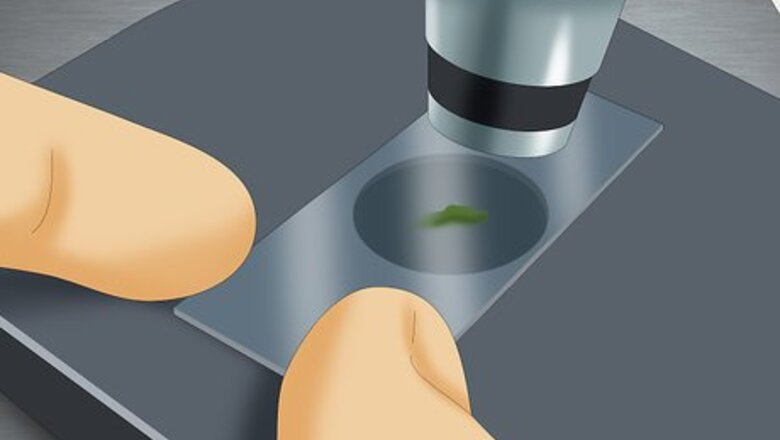
views
Observing Microorganisms Through a Microscope
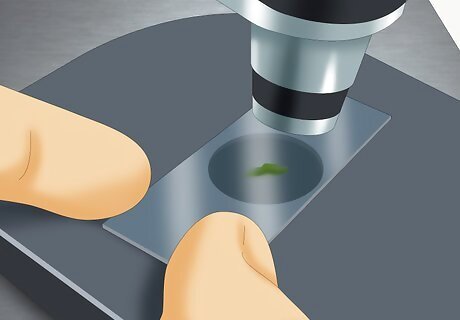
Place your slide on your microscope. The slide will sit directly under the objective lens of the microscope. Push down on the back of the stage clip to raise the clip and allow you to place the slide under it. This clip will hold the slide in place while you view your sample.
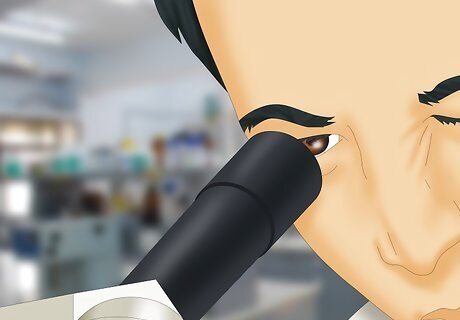
Look through the lens at your sample. When you start, the microscope should be set to the lowest power objective, which is usually 4X or 10X. On the side of the microscope, there is a knob called the coarse adjustment knob. This knob will allow you to move the lens up and down to focus.
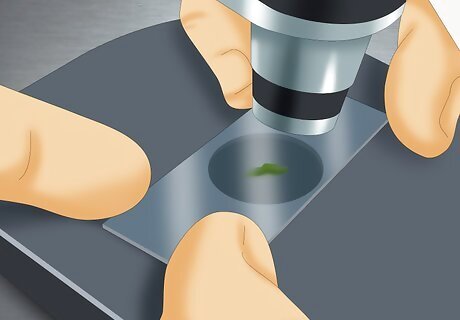
Adjust the sample to the center of your view. If your sample is not in the center of the viewing field, you can use your fingers to gently move the slide. Be careful not to move too much. Also, take care to only touch the outside of the slide. Fingerprints on the slide can make it difficult to see your sample. After making this adjustment, you might need to refocus your objective lens slightly using the fine adjustment knob.
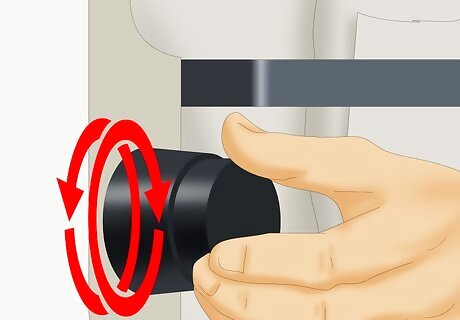
Adjust the magnification on your microscope. Once you have your sample in focus with the low-powered objective lens, you can use the high powered lens to get a closer look. Change to the high powered lens, but be careful not to let it touch the slide. You may have to refocus slightly when you change lenses. Some microscopes have a fine adjustment knob on the side that is ideal for this.
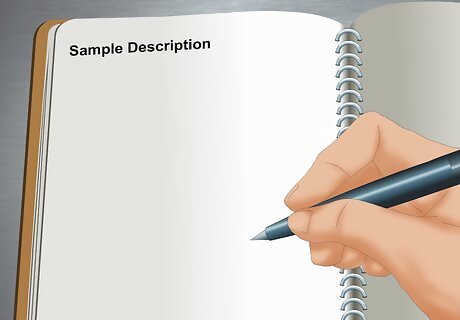
Record what you see. You can use a diary or journal to write down what you see in the microscope. Drawing what you see is another good option. Be sure to include any structures that you notice in your microorganisms. Some microscopes have the ability to hook up to a laptop and take pictures. This is a great way to capture what you see.
Selecting and Preparing Microorganism Slides to Observe
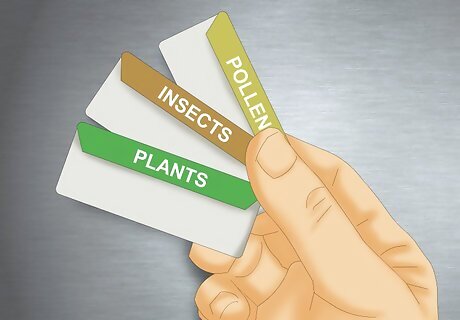
Use a pre-made slide. This is the best way for a beginner to know that they will be able to find a sample. Slides can be purchased that have permanently fixed samples of microorganisms. If you are using a microscope in a school lab, you will likely use this kind of slide.
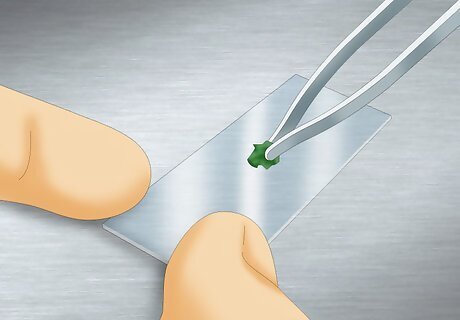
Select a safe, known microorganism to sample. If you do not want to use a pre-made slide, you can make your own. You should be very careful about the microorganisms you select. Do use any microorganisms collected from rotting food or the human body. This can be very dangerous.
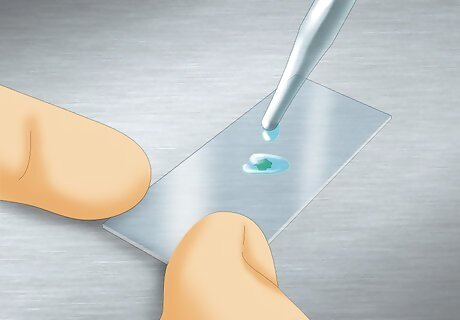
Put the microorganism sample onto a glass slide. Since you are dealing with organisms too small to be seen with the naked eye, chances are that you will be using a wet mount, which is a sample that is already suspended in a liquid (probably water). Use a pipet to place a drop of water on your glass slide. Try to center the water droplet on the slide. Glass slides are the standard, but plastic slides may be used as well.
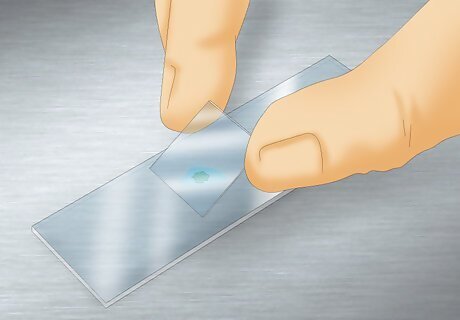
Cover with a coverslip. A coverslip is a small thin square of glass (or plastic) that covers your sample. It helps to flatten out the water droplet and hold your sample in place beneath the lens. If you do not have coverslips, another slide can be used to do this. Depression slides have a well that holds the sample. They are usually more expensive, but they do not require a cover slip. To avoid bubbles, put the coverslip on slowly at an angle.
Setting Up Your Microscope to Observe Microorganisms
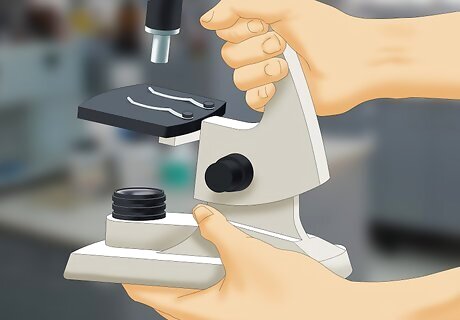
Move the microscope to your workspace. Anytime you are carrying your microscope, you should have two hands on it. One hand goes under the base. The other hand holds the arm of the microscope.
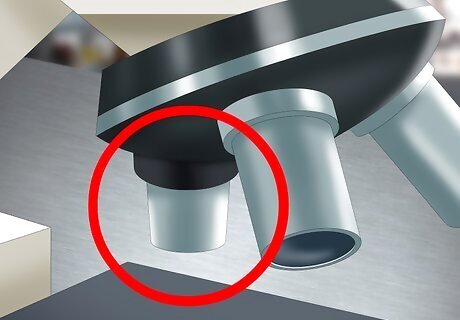
Select the lowest power lens. Make sure that the lowest power lens is in place before proceeding. This will allow you to get your microorganisms into focus before trying a high powered lens. The lowest power lens will be the shortest lens and will have the lowest number written on the side (for example 40x).
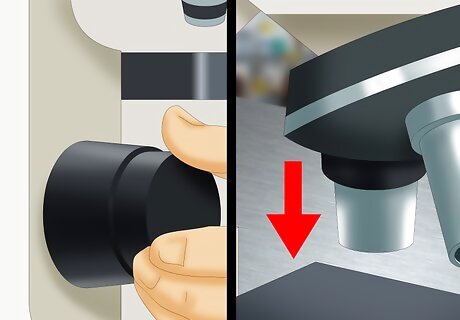
Move the lens as far down as it will go. It is best to bring your microorganism into focus by adjusting the lens up. This way you do not go too far down and touch your slide. For this reason, you want your starting point to be as low as possible. Look at the microscope from the side while turning the coarse adjustment knob until the lens is as far down as it will go without touching the slide.
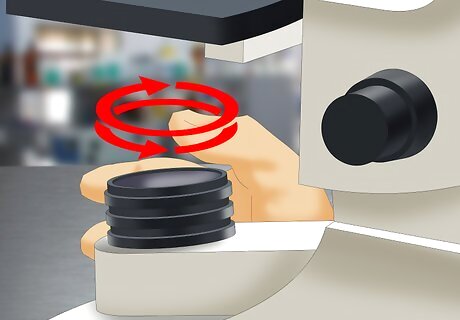
Adjust the amount of light. Opening the diaphragm will allow more light to shine through the slide into the lens. Adjusting the mirror will make sure that the light is directed to the right point. open the diaphragm all the way, and adjust the mirror to get the most light possible.











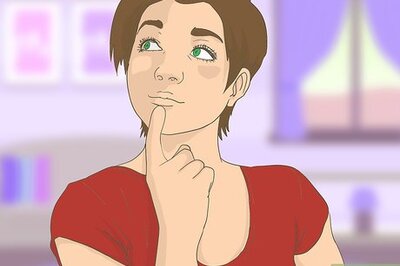








Comments
0 comment